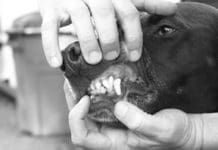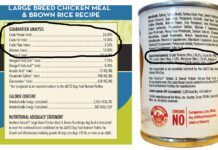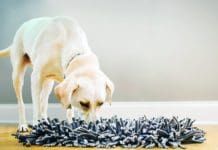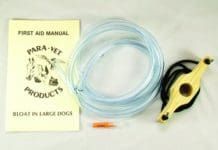Home Search
raw%20dog%20food - search results
If you're not happy with the results, please do another search
Your Dog’s Mouth
The mouth is the site of the two most common canine diseases.
Does Your Dog Eat Grass?
radish sprouts
Dry Dog Food Labels: How to Compare Fat, Protein, and Carbs
Federal and state laws require pet food makers to put information about the protein and fat content of their products on pet food labels. Unfortunately, few people understand this critical information.
Why Does My Dog Stink?
Oh, my. What’s that smell? If your dog is in the room, it could be really bad breath, dreadful flatulence, leaking anal glands, skunk...
Safe Choices for Chewing in a Crate
Dog owners tend to think of crates as safe havens for their dogs or puppies – a place where they can stash a puppy...
Dog Accessories 2019: Best Dog Gear of the Year
The whole world is aware that we love to buy stuff for our pets; more than $70 billion was spent by U.S. owners on their pets last year. But we have to say that a lot of that spending was a waste! There are tons of cutesy, low-quality products out there that fail to deliver any real benefit to either dogs or their handlers. That's where we can help, with five pages of top-quality stuff that you and your dog will truly enjoy.
Bloating in Dogs Treatable with Gastropexy
Symptoms of bloat, which is incredibly painful for the dog, include pacing and restlessness; a distended abdomen; turning to look at or bite at the flank area; rapid, shallow breathing; retching without actually vomiting up any food, and excessive drooling. Bloat is a two-part disorder, telegraphed by its formal name: gastric dilatation and volvulus. The first part, gastric dilatation, refers to an expansion of the stomach due to the presence of gas and/or food. The second part, volvulus, is the fatal blow: The distended stomach begins to twist, cutting off the blood supply and causing its tissue to die off.
Alternative Treatment & Supplement Recommendations
Whole Dog Journal readers often try techniques and products described in the magazine, but sometimes years go by before we need something we read about, or it disappears from the market, or we have trouble finding it, or we simply forget all about it. Last month we revisited green tripe, Seacure, and Willard Water. Here are two more go-to products featured in previous issues that might now be perfect for you and your dog, Wobenzym & EMT Gel/Spray.
Calculating a Dog Food Diets Protein, Fat, Carbs, and Fiber
It is not easy to figure out how much fat and other nutrients are really in the food you feed, whether it's kibble, canned food, or a home-prepared raw or cooked diet. Here are some tips that can help. There are three different ways of measuring amounts of protein, fat, carbohydrates, and fiber in foods.
Managing Diabetes in Dogs
What causes diabetes in dogs? Diabetes is one of the most common endocrine diseases affecting middle-aged and senior dogs, with 70 percent of patients older than seven at the time of diagnosis. Diabetes in puppies hardly exists - diabetes rarely occurs in dogs younger than one year of age, and it is more common in females and neutered males than in intact males. Keeshonds, Pulis, Cairn Terriers, Miniature Pinschers, Poodles, Samoyeds, Australian Terriers, Schnauzers, Spitz, Fox Terriers, Bichon Frise, and Siberian Huskies may be at higher risk.
Chewing Improves Your Dog’s Teeth and Gum Health
Many people think of their dog's chewing as just a puppy thing" but the fact is
5 Steps to Enhancing Your Dog’s Store-Bought Dog Food
Whole Dog Journal readers have learned how to identify the best commercial foods when they shop for their dogs. But whether you feed dry kibble or canned food, even the best commercial diets can be improved with the addition of appropriate fresh foods. Keep the following things in mind when adding fresh foods to your dog's diet.











